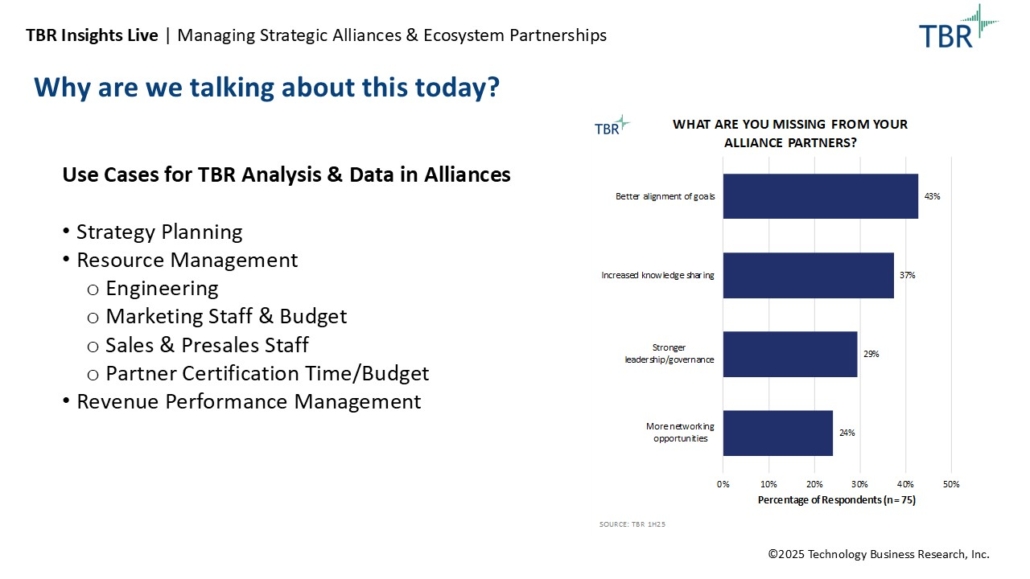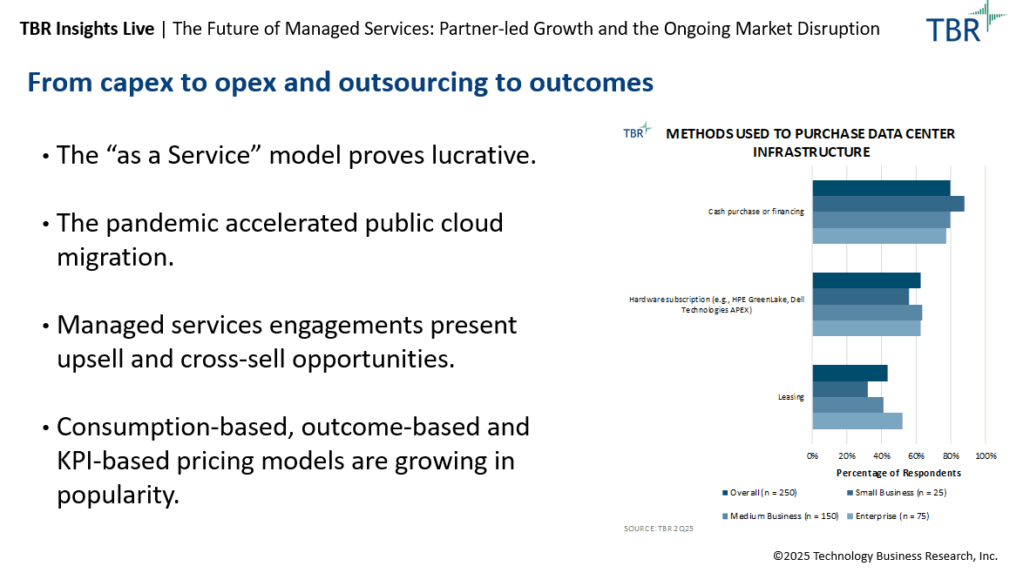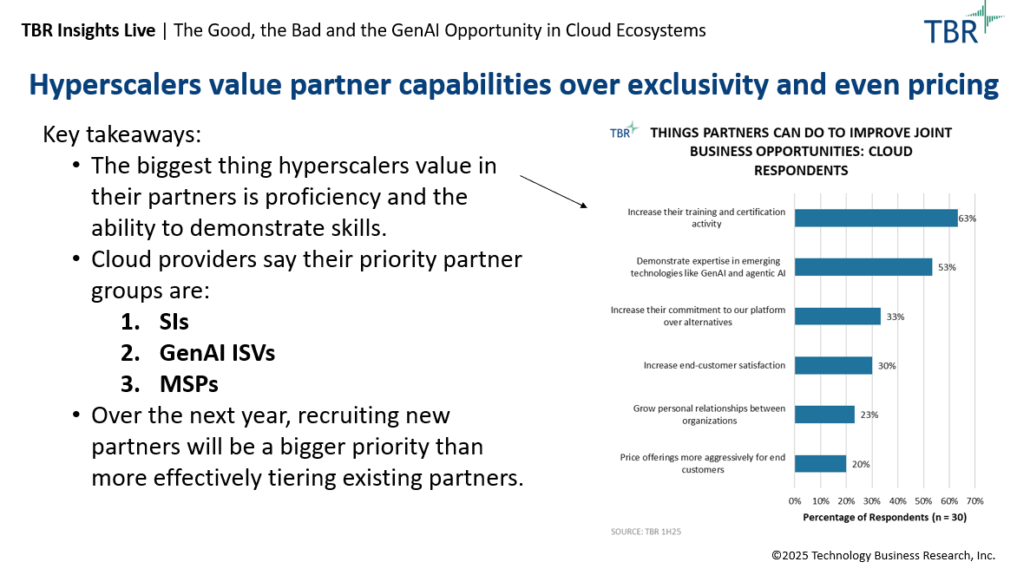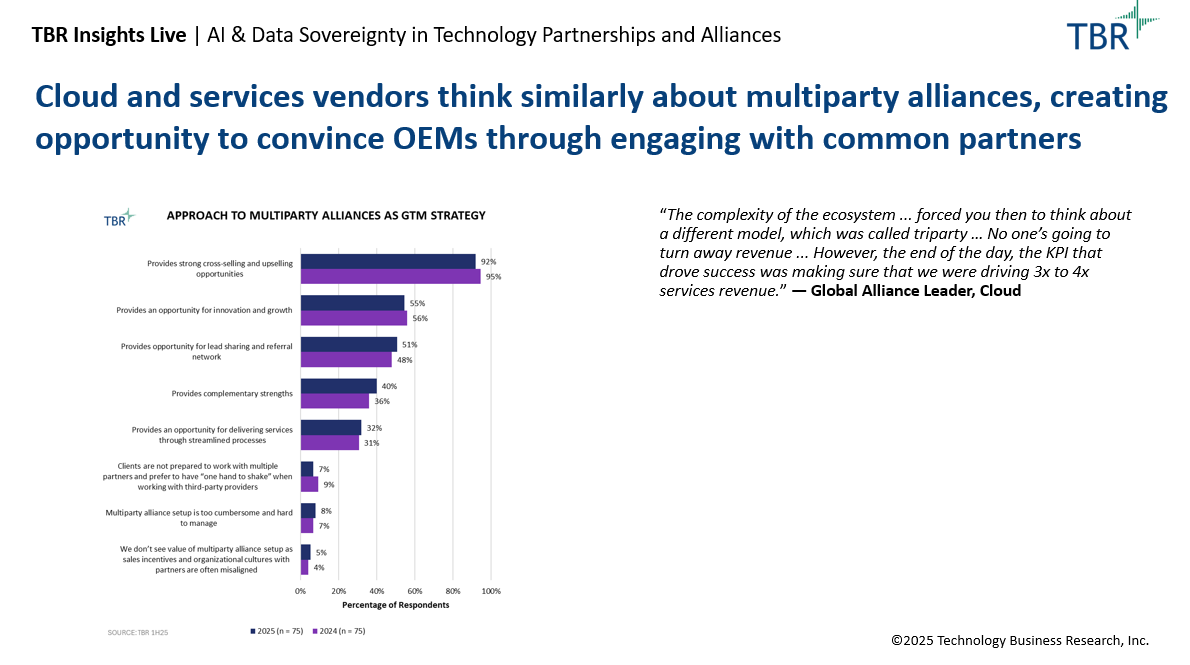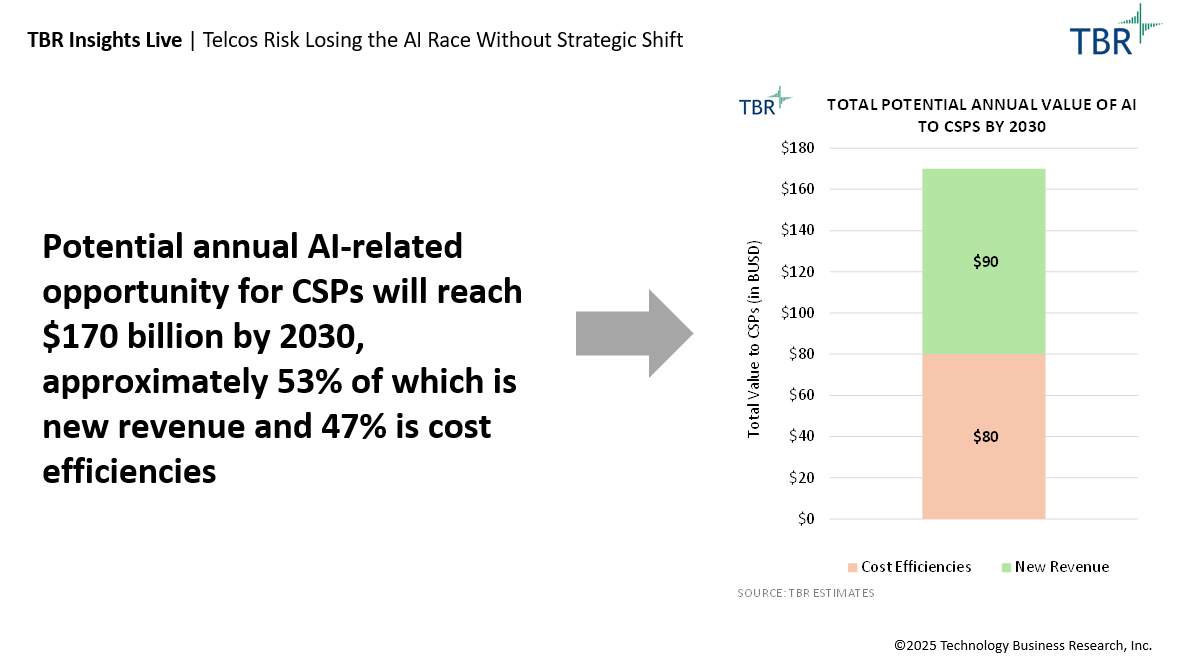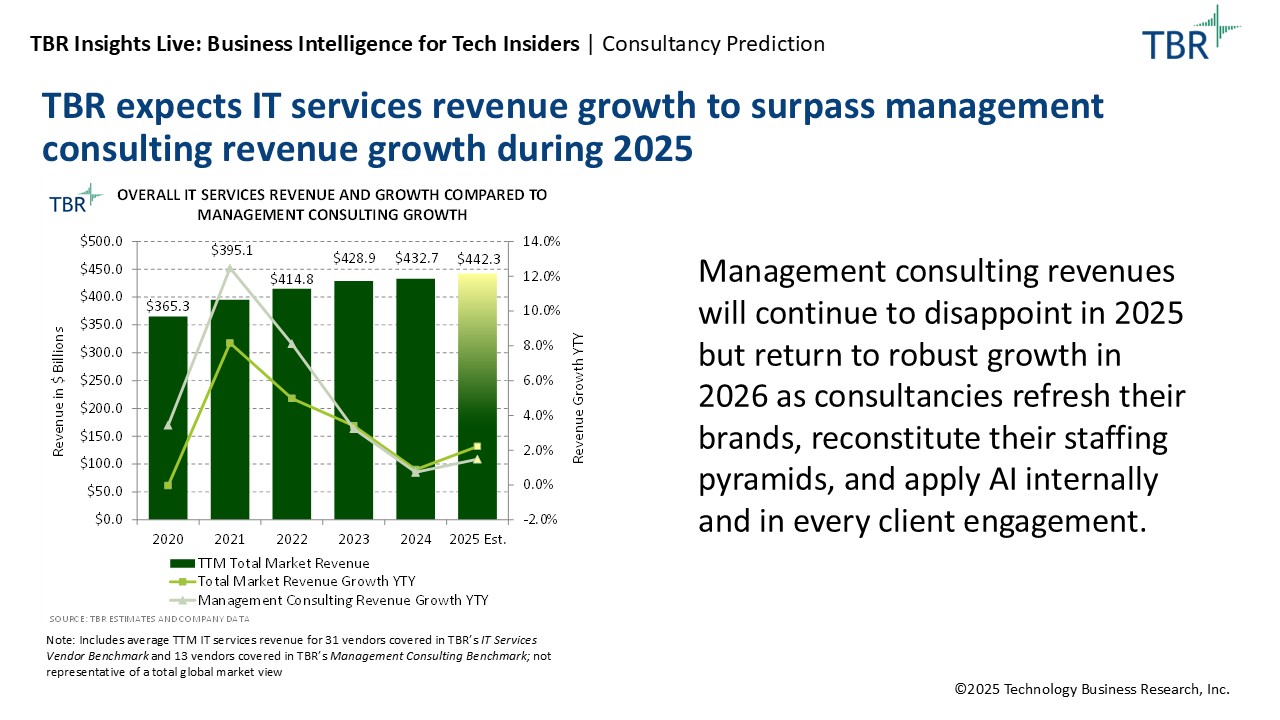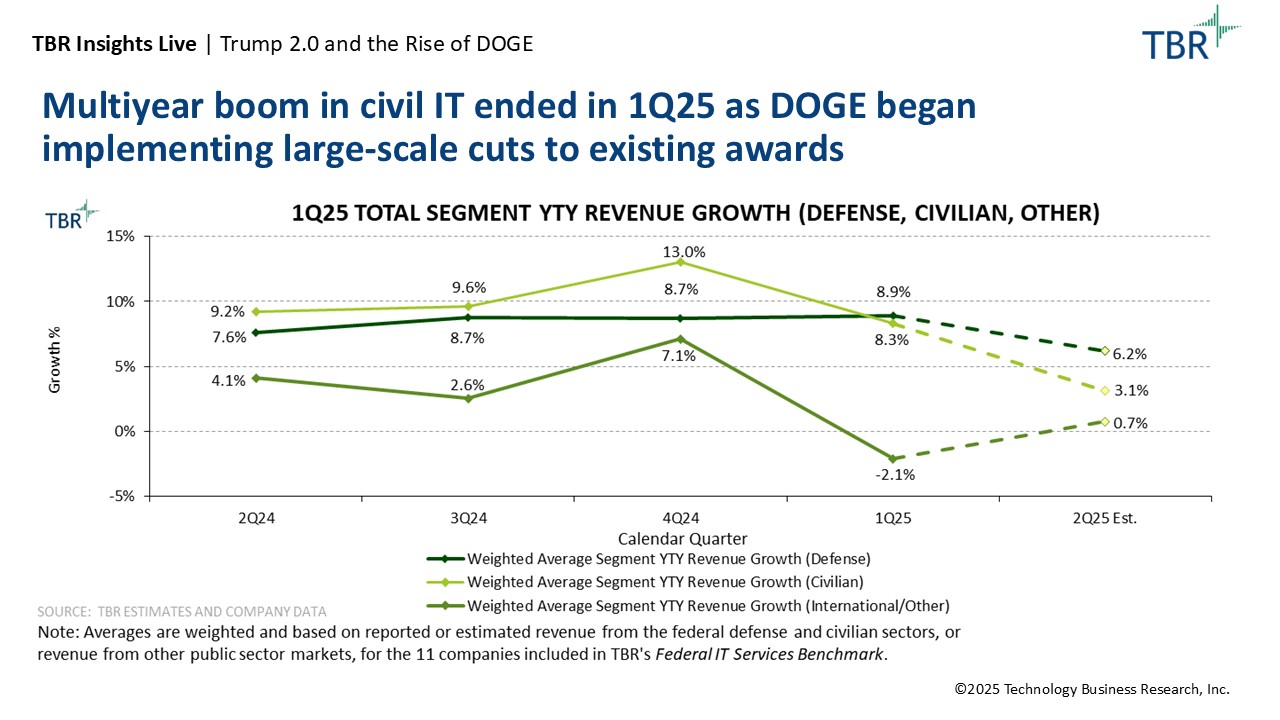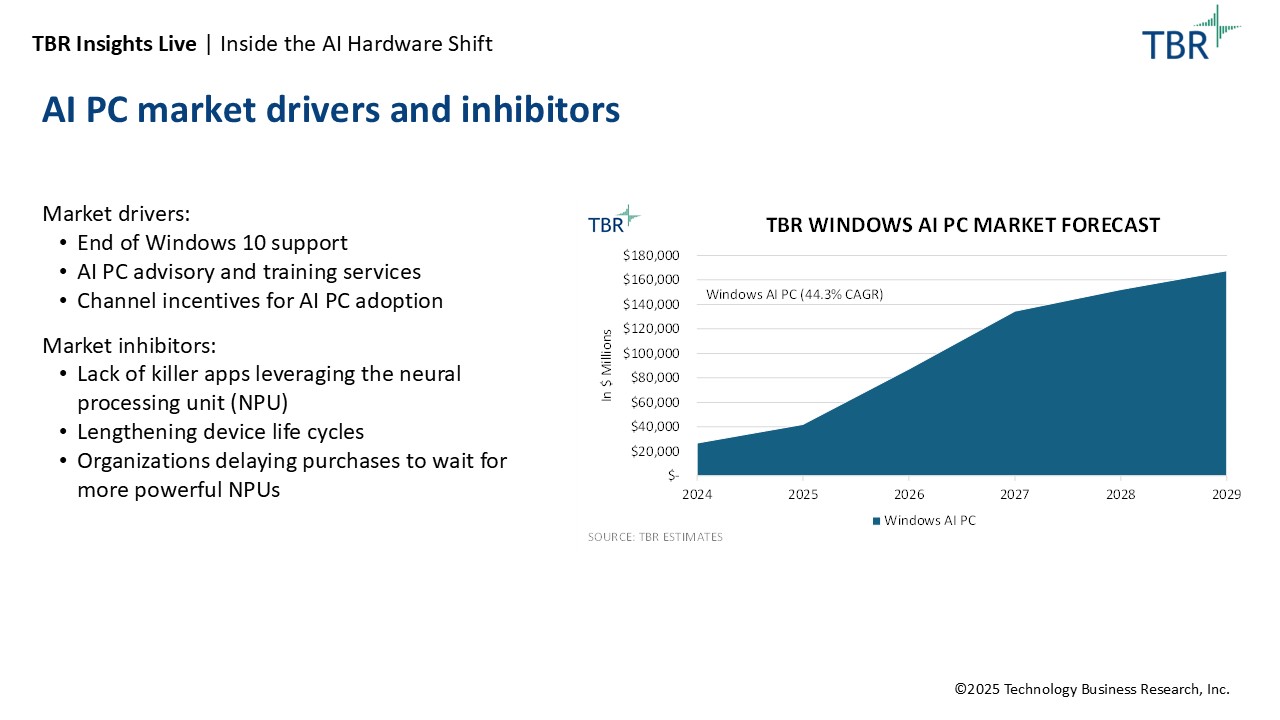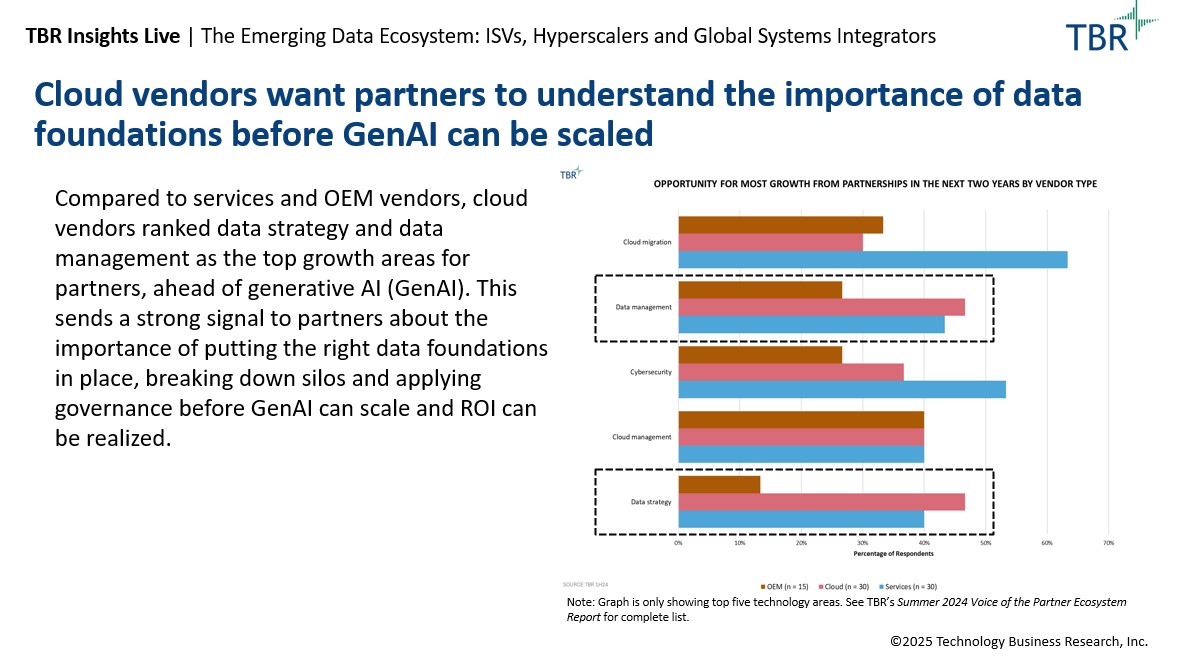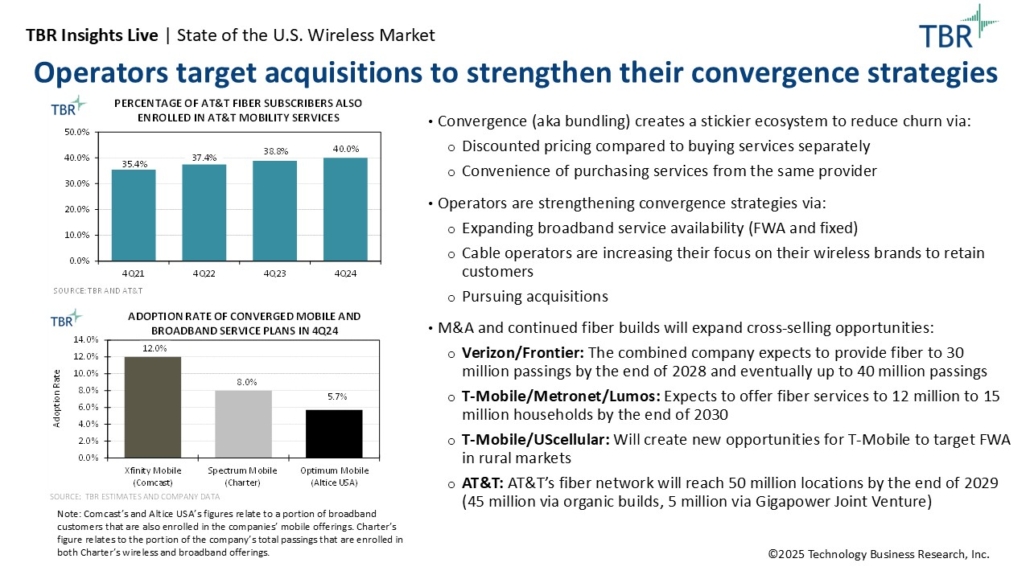Managing Strategic Alliances & Ecosystem Partnerships: A Case Study in Data-driven Strategy and Enablement
Gone are the days of declared vendor agnosticism — enter the super-group go-to-market alliance
TBR market analysis shows that over 83% of enterprise technology spend is captured by multivendor partnerships and strategic alliances. Central to these super-group alliances are global systems integrators (GSIs), and key to GSIs’ execution are their practices dedicated to enabling alliance partners’ technologies.
In the below TBR Insights Live session, TBR’s Principal Analyst Patrick Heffernan and Senior Vice President of Sales & Marketing Dan Demers share how TBR’s proprietary data is supporting executives’ go-to-market alliances and ecosystem partnerships. TBR tracks the Amazon Web Services, Google Cloud Platform, Microsoft Azure, SAP, Oracle, ServiceNow, Workday, Salesforce and Adobe practices of the top 20-plus GSIs globally. Our proprietary data includes trailing 12-month revenue, headcount and credentialing details. Tier 1 companies are using this information for competitive intelligence, while savvy Tier 2 firms are using it to gain mindshare and capture revenue.
In the above session on how clients leverage TBR’s ecosystem and alliance research, you’ll learn:
- How IT outsourcing and applications outsourcing revenue trends can guide partner selection
- How trends in headcount and credentialing can signal hidden strengths or weaknesses in peers’ strategies
- How objective data can guide goals in staffing, marketing budgets, engineering talent and certifications
Excerpt from “Managing Strategic Alliances & Ecosystem Partnerships: A Case Study in Data-driven Strategy and Enablement”
This TBR Insights Live session is available on demand on our YouTube channel. Visit this link to download the presentation’s slide deck.
If you’d like to further explore the data mentioned in this TBR Insights Live session, sign up for a free trial of TBR Insight Center™ today.
TBR Insights Live sessions are held typically on Thursdays at 1 p.m. ET and include a 15-minute Q&A session following the main presentation. Previous sessions can be viewed anytime on TBR’s Webinar Portal.


